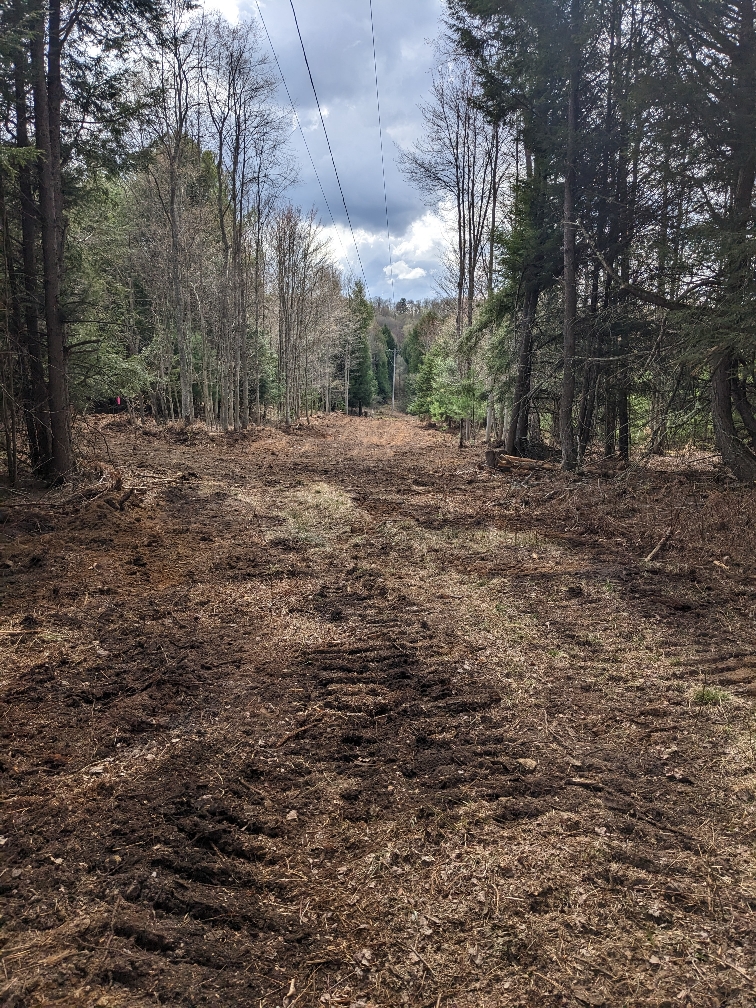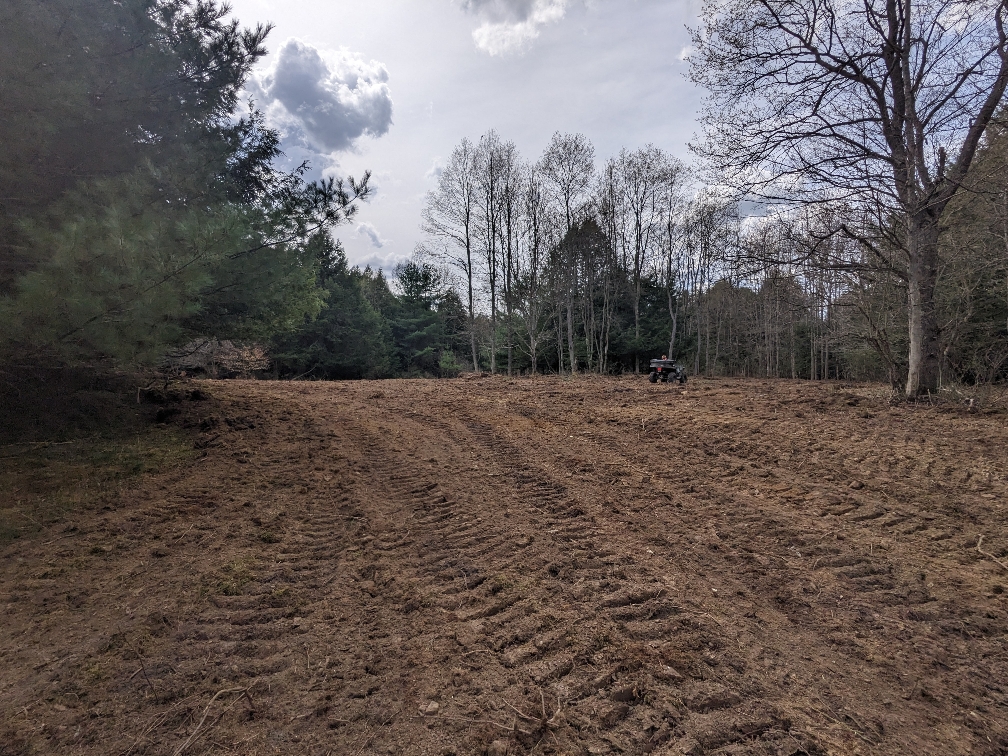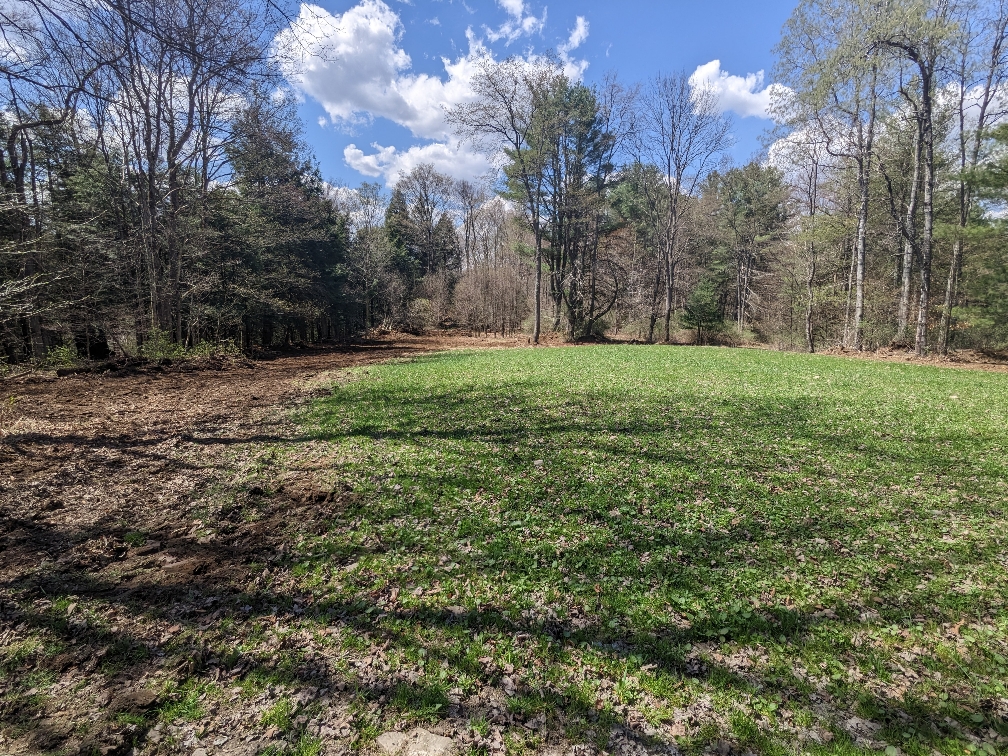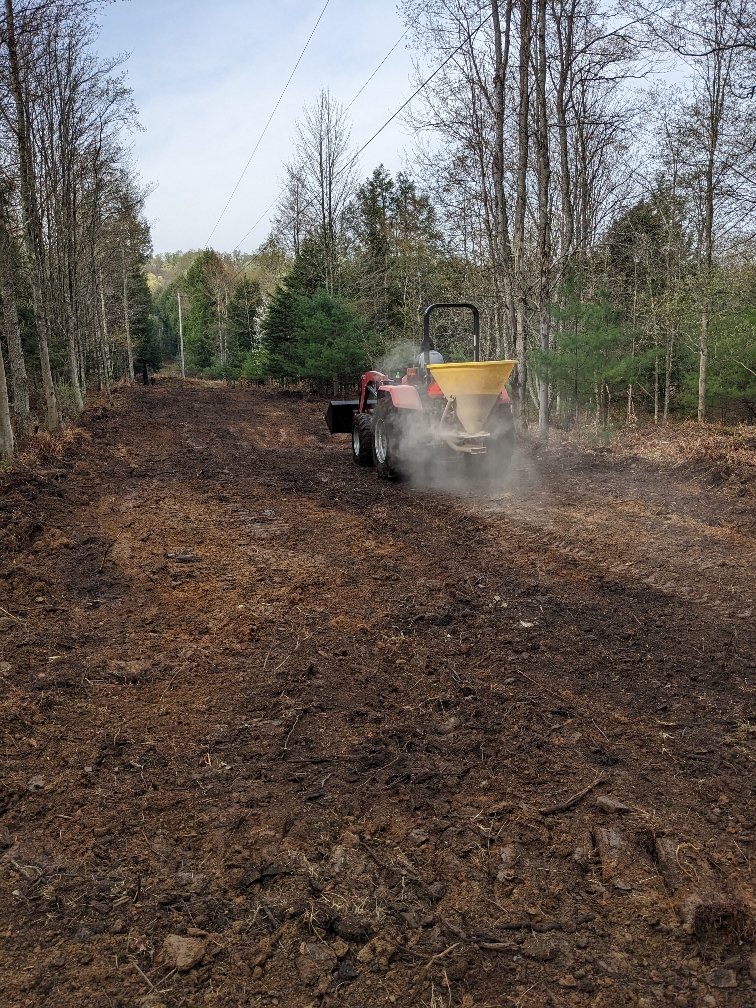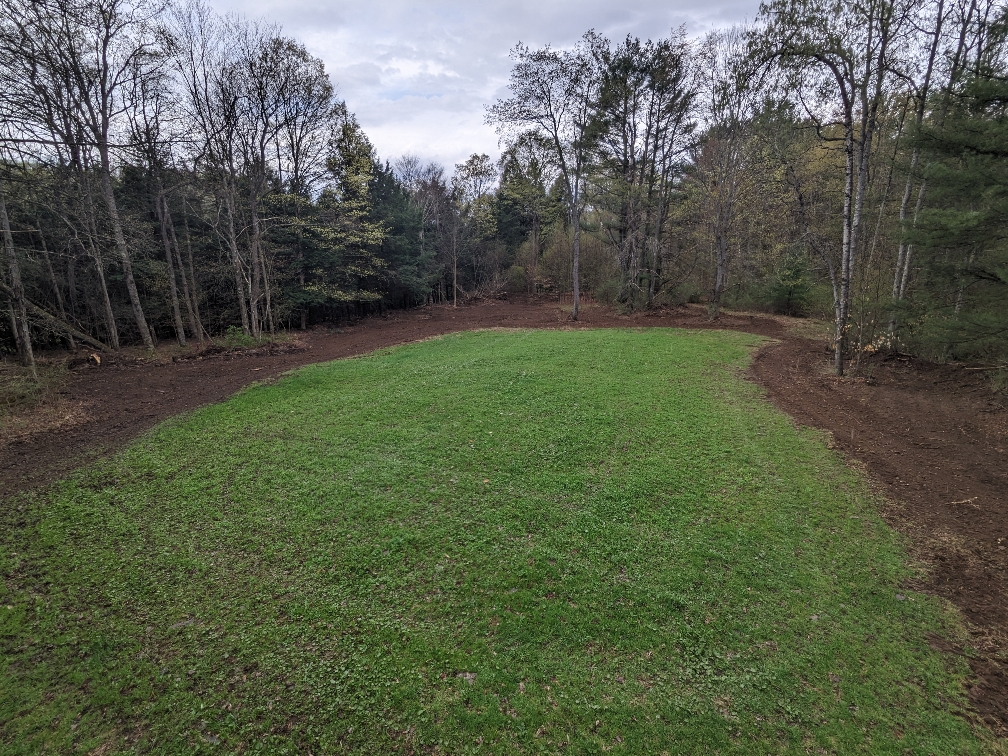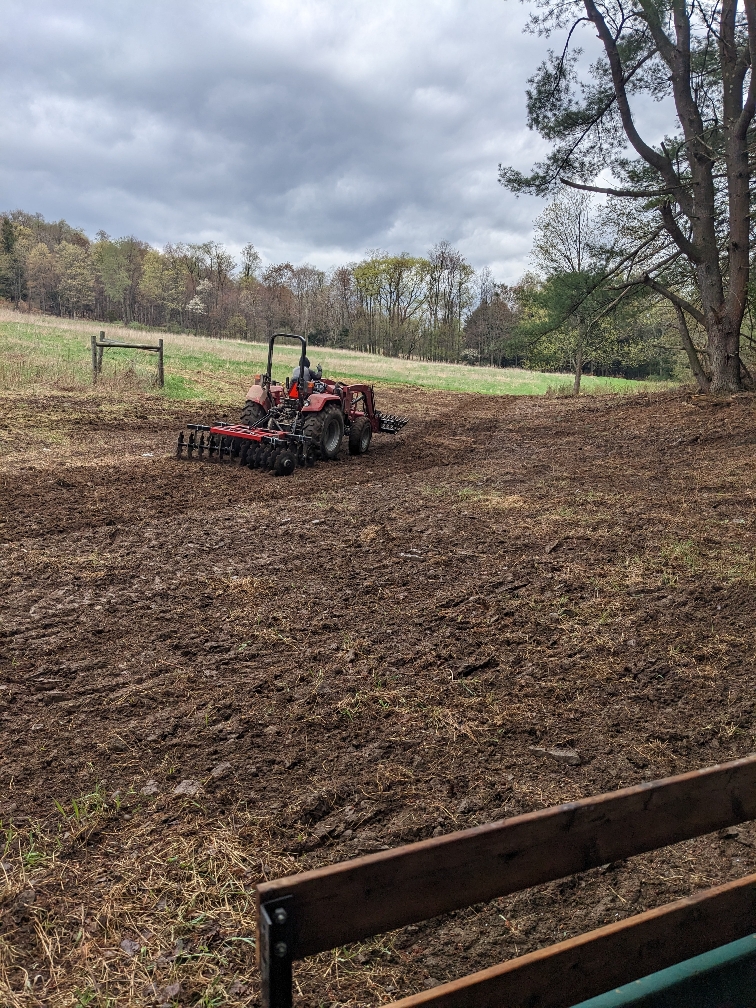Shearwood Forest
5 year old buck +
to quickly summarize my father and I went together last summer and bought our first piece of owned hunting ground. Mostly working on the cabin the first year we got a handful of small fall food plots in last fall, everything but a brassica planting did really well.
I am in zone 5b and we have started get an early spring green up although this week is much colder than last week.
My existing plots all received some level of frost seeded clover, most have clover and oats held over from last fall and are looking very good this spring.
I have some fields that are either old hay or old cattle pasture that I plan some combination of mow, spray and disc later this spring for June planted summer crops. My soil isn't near warm enough for those yet.
This past weekend with the help of a dozer we cleared some new areas, we weren't sure when the dozer would be available so we didn't have a planting plan prepared ahead of time. Now I have several areas of completely exposed soil, many of these locations will be a fall planted annual later. my question is should I get in there now with lime, fertilizer and seed that can handle a bit of frost in early May or should I wait until that dirt starts to come back with whatever weeds are in the respective locations seed banks, spray it and then plant. I am tempted with how good the dirt already looks in some of those locations to get out there with something like clover, field peas, and oats and plan to terminate that with whatever weed competition they get when im ready for my fall planting. I also think a few weeks of new growth wouldn't hurt my coming turkey season.
I have buckwheat, sunhemp, sunflowers ect with some buck bag blends like power plant and lablab plus to put in later (likely mid June in my zone). My plan for those are my larger fields that are old pasture fesues need time to green then kill the grass before planting something that will shade and smoother them for the rest of summer. However many of these dozer made areas are more timbered locations with adaquent sunlight in the 1/4 to 1/2 acre range that were more brush or thistle than grasses.
I am in zone 5b and we have started get an early spring green up although this week is much colder than last week.
My existing plots all received some level of frost seeded clover, most have clover and oats held over from last fall and are looking very good this spring.
I have some fields that are either old hay or old cattle pasture that I plan some combination of mow, spray and disc later this spring for June planted summer crops. My soil isn't near warm enough for those yet.
This past weekend with the help of a dozer we cleared some new areas, we weren't sure when the dozer would be available so we didn't have a planting plan prepared ahead of time. Now I have several areas of completely exposed soil, many of these locations will be a fall planted annual later. my question is should I get in there now with lime, fertilizer and seed that can handle a bit of frost in early May or should I wait until that dirt starts to come back with whatever weeds are in the respective locations seed banks, spray it and then plant. I am tempted with how good the dirt already looks in some of those locations to get out there with something like clover, field peas, and oats and plan to terminate that with whatever weed competition they get when im ready for my fall planting. I also think a few weeks of new growth wouldn't hurt my coming turkey season.
I have buckwheat, sunhemp, sunflowers ect with some buck bag blends like power plant and lablab plus to put in later (likely mid June in my zone). My plan for those are my larger fields that are old pasture fesues need time to green then kill the grass before planting something that will shade and smoother them for the rest of summer. However many of these dozer made areas are more timbered locations with adaquent sunlight in the 1/4 to 1/2 acre range that were more brush or thistle than grasses.


